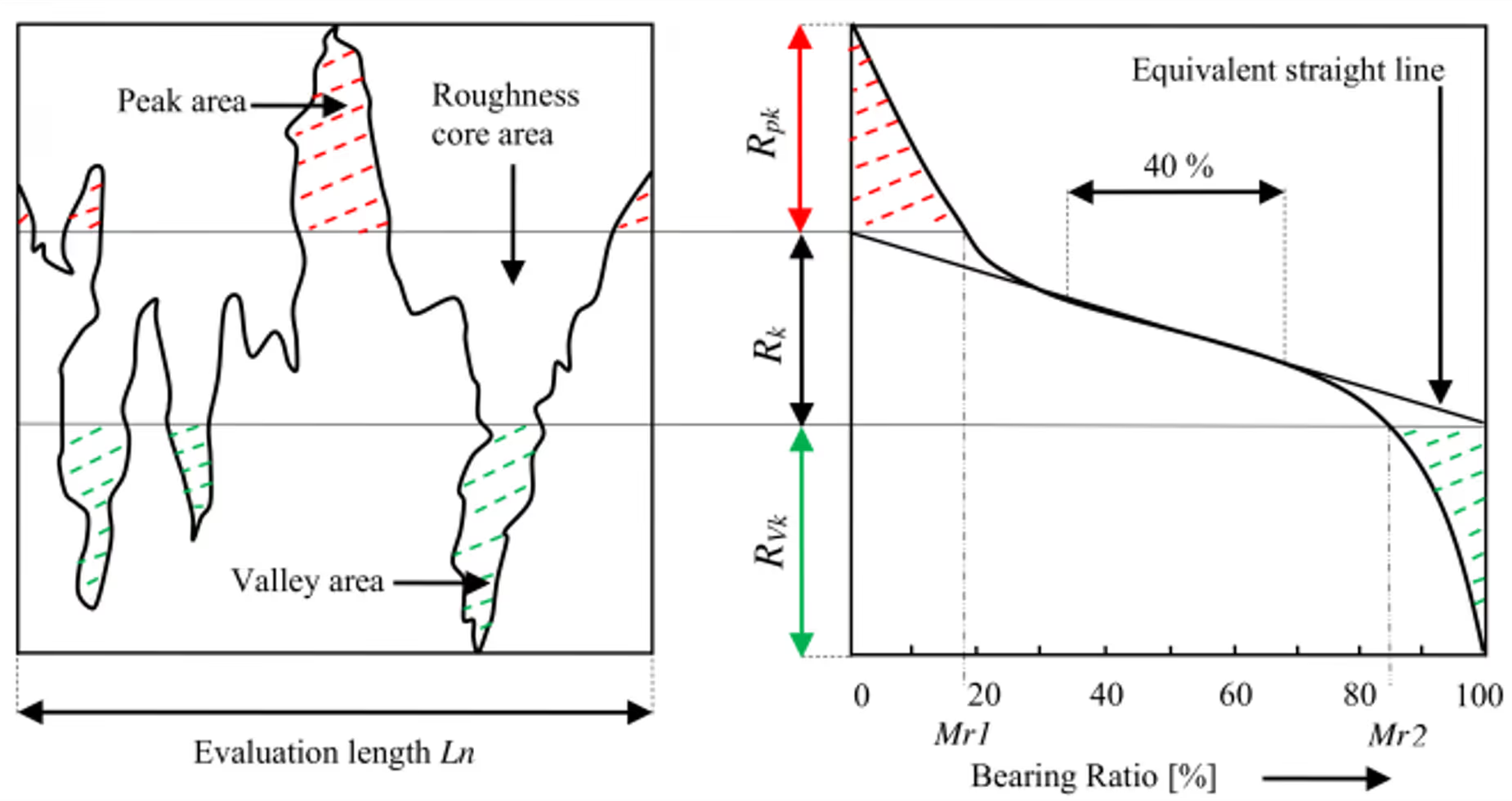
Achieving optimal surface roughness is crucial for the performance and longevity of seals, wipers, and guide rings in hydraulic systems. However, the conventional approach to specifying surface roughness involves numerous interconnected parameters, making it difficult to find the perfect balance between abrasive and adhesive wear. This challenge ultimately affects the lifetime and efficiency of hydraulic systems.
In this Inside Story, we will take a closer look at the innovative partnership between Freudenberg Sealing Technologies GmbH and Griekspoor Thermal Coatings, which has simplified surface roughness parameters by focusing on three key values based on the Abbott Firestone curve. We will also explore how this groundbreaking approach has had a hugely positive impact on hydraulic system lifetime, providing significant benefits to the industry as a whole.

The importance of surface roughness
Surface roughness plays a vital role in the performance and longevity of seals, wipers, and guide rings in coatings. Achieving the optimal surface roughness is crucial for minimizing wear and ensuring adequate lubrication. Seal suppliers typically specify the required roughness for their products to maintain optimal performance while reducing wear.
Finding the perfect balance between abrasive and adhesive wear is a significant challenge. A surface that is too rough can cause abrasive wear, while a surface that is too smooth may lead to adhesive wear or the slip-stick effect. Conventional roughness values, which are often dictated by competitive considerations, involve numerous interconnected parameters, complicating the process of achieving the required roughness values. This complexity can make it difficult to optimally match the components of the tribological system, such as the seal, mating surface, and hydraulic fluid.
The problem with conventional roughness values
One of the main issues with conventional roughness values is the sheer number of parameters involved. Driven partially by competitive factors, these values are comprehensively specified, making it challenging to achieve the desired surface roughness. Additionally, the interconnection between various roughness values further complicates the process of adhering to the required specifications.
The complex nature of conventional roughness values makes it difficult to optimally match the components of the tribological system, such as the seal, mating surface, and hydraulic fluid. This can lead to a shorter service life for hydraulic systems, as the mismatched components are unable to work together efficiently.
The solution: simplifying surface roughness parameters
To address this issue, Freudenberg Sealing Technologies and Griekspoor Thermal Coatings conducted extensive tests with Freudenberg seals on Griekspoor coatings. The results of these tests revealed that only three roughness values, based on the Abott Firestone curve, are necessary to define the surface roughness of a finished coating: Rpk (peak height), Rvk (valley depth), and Ra (average roughness).
By focusing on these three key roughness values, the partnership has effectively simplified the process of achieving optimal surface roughness:
- Rpk: This value defines the peaks in the coating and should be relatively low (< 0.1µm) to minimize abrasive wear.
- Rvk: This value characterizes the valleys in the coating, which should have adequate depth (< 1.0µm) to provide sufficient lubrication without causing oil loss outside the cylinder.
- Ra: When the Rpk and Rvk specifications are met, a typical Ra value ranges from 0.1µm to 0.2µm, ensuring a consistent and optimal surface roughness.
These simplified parameters not only make it easier to achieve the required roughness values but also help maintain consistency throughout the lifetime of the cylinder, even under long-term heavy use.
Applying the simplified roughness values
The simplified roughness values for Rpk, Rvk, and Ra can be applied to a wide range of seal constructions in cylinders. By focusing on these three key values, manufacturers can more easily ensure that the components of the tribological system, such as seals, mating surfaces, and hydraulic fluid, are optimally matched. This results in improved performance, efficiency, and service life for hydraulic systems.
Even with these simplified roughness values, it is essential to consult with seal suppliers to ensure that the specified roughness is appropriate for their products. Furthermore, it is crucial to match the coating's roughness to the different components inside the cylinder head to achieve the best possible performance and durability.
Griekspoor's customizable surface roughness
A huge advantages of Griekspoor's TOPCOAT is their ability to "tune" the surface roughness of their coatings to meet virtually any required roughness. This flexibility allows for the customization of coatings to suit specific applications and component requirements, further enhancing the performance and longevity of hydraulic systems.
Conclusion
The collaboration between Freudenberg and Griekspoor has led to a significant breakthrough in simplifying surface roughness parameters. By focusing on the three key values of Rpk, Rvk, and Ra, the partnership has made it easier for manufacturers to achieve optimal surface roughness, leading to improved performance and durability in hydraulic systems.
The simplified surface roughness parameters resulting from the partnership between Freudenberg and Griekspoor have the potential to positively impact the industry by making it easier to optimize the tribological systems in hydraulic applications. This, in turn, can lead to longer service life, reduced wear, and increased efficiency in hydraulic systems across various industries.
Request we contact you
Request Quotation
Fill out the form to request a quote.
Request a quoteProduct data sheets

Get access to our download center
Get access